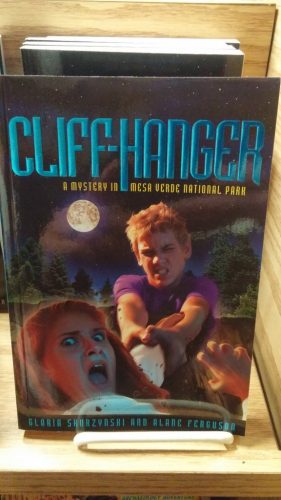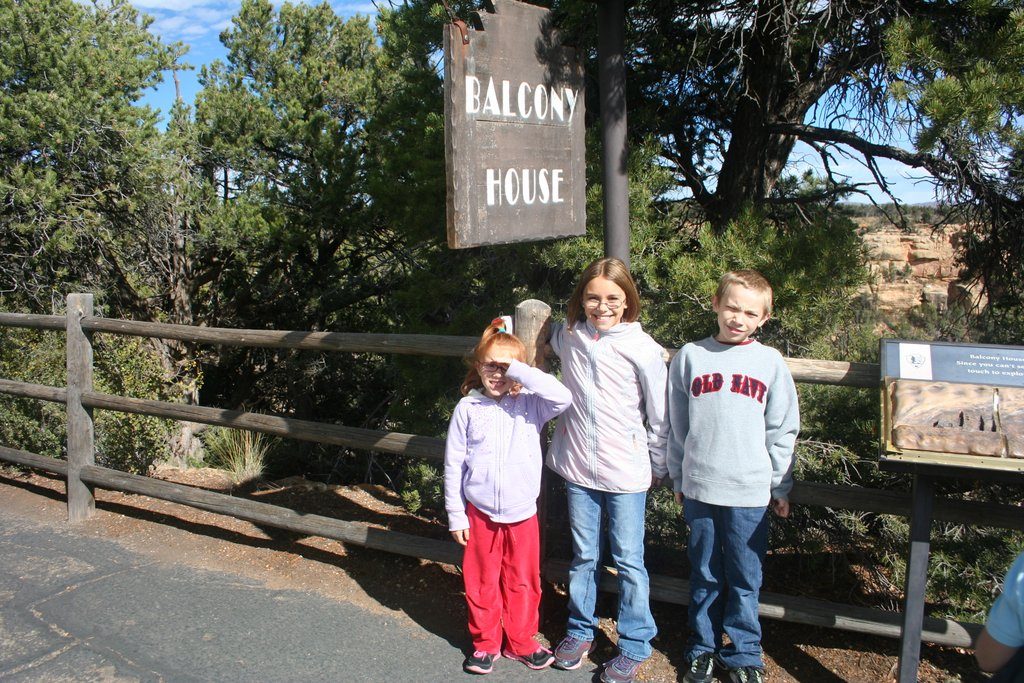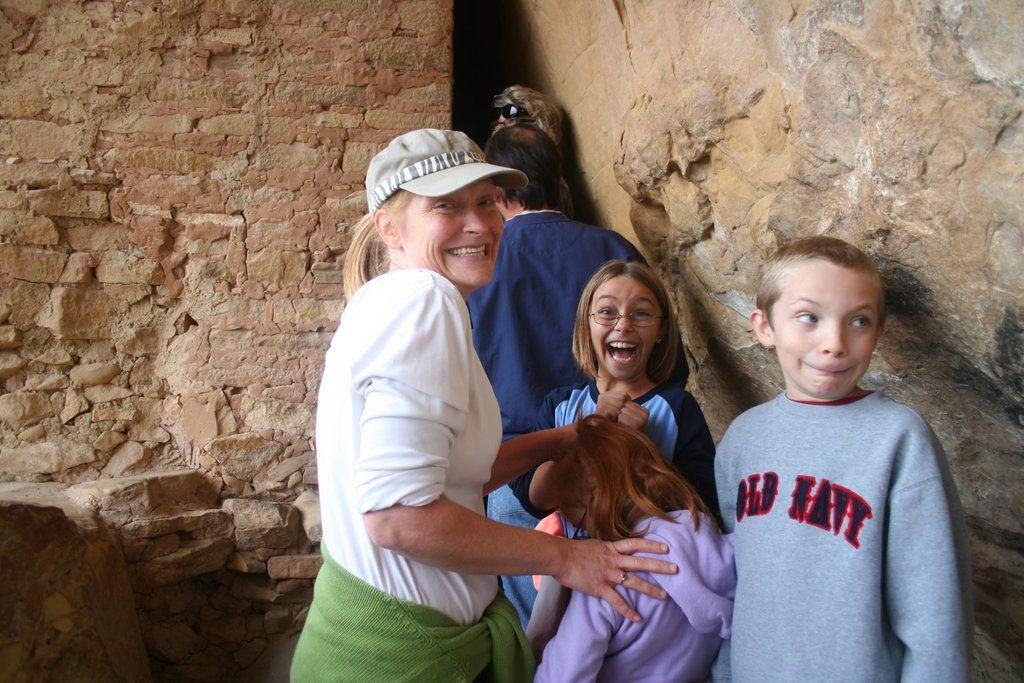Mesa Verde
We were thrilled at the chance to visit Mesa Verde National Park. We missed it last year when we were in the Four Corners area and had been looking for an opportunity to go there.
It did not disappoint. Ali recently read a youth novel (Mysteries in Our National Parks: Cliff-Hanger: A Mystery in Mesa Verde National Park) set in Mesa Verde and had learned all about the cliff dwellings with their ladders, tunnels, and precipitous perches in alcoves along the canyon walls. She loved the book and was so excited to actually visit the places it described.
(By the way, a great book for adults that is set in the Mesa Verde area is Haunted Mesa by Louis L’Amour. I read this one in about 6th grade and have wanted to visit the Anasazi ruins ever since.)
We found a small RV park in Cortez, Colorado about 15 minutes from the park entrance. After setting up at the RV park, I went to the Mesa Verde visitor center to reserve a tour of one of the cliff dwellings for the next day. Lucky for us, the lady at the RV park told us it was a good idea to get tour tickets a day early to make sure they weren’t sold out. Even with it being the off season, tickets for one of the tours was sold out for the next two days, but we lucked out and got tickets for the Balcony House tour–the most physically demanding and adventurous of the offerings.
Balcony House
The Balcony House is about an hour drive from the park entrance. We arrived at our designated tour time and got lucky again with our tour guide, a funny park ranger who made our hour-long tour informative and exciting.
We started the tour by descending a long metal staircase down the side of the canyon wall, then walking along a narrow pathway to reach the Balcony House entrance–a climb up a 30 foot ladder.
Angie is not too fond of heights and was quite nervous as we descended and walked along the path to the ladder. She really dug down deep and courageously climbed the ladder alongside Abby as I followed right behind in case Abby slipped.
We all breathed a sigh of relief after reaching the top of the ladder and getting our feet on more firm ground.
Inside the Balcony House, we got to learn about how the Ancestral Puebloans (Anasazi) people lived. This cliff dwelling has 40 rooms and two kivas, indicating there were most likely two extended families living there. The excellent craftsmanship has held up for over 800 years! Most of the site is in its original condition, with very little maintenance done by the park staff. Even the wood beams, which were cut from local Juniper trees using stone axes, are all still the originals.
After spending almost an hour inside the Balcony House, we made our way to the exit. This included a crawl through a 12-foot long stone tunnel narrow enough my shoulders wouldn’t fit without turning sideways. I think this was the kids’ favorite part of the whole tour.
Then we climbed another ladder and wound our way up a narrow trail to the canyon rim.
More of Mesa Verde
We spent the rest of the day viewing other cliff dwelling and ancient pit houses from various overlooks and hiking trails. The largest cliff dwelling in North America, Cliff Palace, is really amazing with 150 rooms and 23 kivas. Archaeologists think around 100 people lived there.
Anasazi Beans
On our way back to the RV park, we stopped by the Ute Mountain Indian Trading Company. It’s run by one of the Ute tribes in the area and features handmade pottery, rugs, and other items. There’s a series of windows at the back of the store where the kids enjoyed watching pottery makers hand paint intricate designs on their creations.
We started talking with one of the men working in the store and found out his family are pinto bean farmers in the area. He told us about Anasazi beans.
The amazing story behind these beans is that in the 1950s while archaeologists were excavating an ancient Anasazi site, they discovered a sealed clay pot with some beans in it. Some of the beans sprouted and led to a viable crop. All the Anasazi beans we have today come from those few ancient beans. Researchers think the original beans were between 750 and 1500 years old!
After doing some further research on Anasazi beans, we found out they are related to pinto beans, but are supposed to have a sweeter flavor, cook faster, and don’t produce as much gas!
So we went to the local market and bought a 10-lb bag for around $1/lb. They are about the size of pintos but a nice burgundy and cream color.
They indeed are delicious and work great as a replacement for pinto beans.
We made a big pot of refried beans and some Indian Fry Bread to make excellent Navajo tacos.
(You might be able to find Anasazi beans at a health food store or you can order them online)
Here’s the recipe we used in our Instant Pot pressure cooker:
Refried Anasazi Beans
4 cups dry Anasazi beans
2 Tbsp coconut oil (you could also use bacon grease or lard)
1/2 large yellow onion, finely chopped
2 medium green bell peppers, finely chopped
2 tsp cumin
1 tsp chili powder
2 14 oz cans beef broth
2 tsp salt
Sort the dry beans to remove any rocks or dirt, then rinse them thoroughly. Soak overnight or put them in the Instant Pot and add about 6 cups water. Pressure cook for 4 minutes, then allow to sit for 10 minutes before releasing the pressure valve. Drain the beans and rinse them.
Saute the onions and green peppers in the coconut oil until the onions just start to turn golden. Then add the cumin and chili powder and continue to saute for about 30 seconds.
Add the beef broth and the beans plus about 1/2 can water. Pressure cook for 10 minutes. Let sit for 10 minutes before releasing the pressure.
Use a potato masher to mash up the beans to the desired consistency. Stir in the salt and enjoy.
































